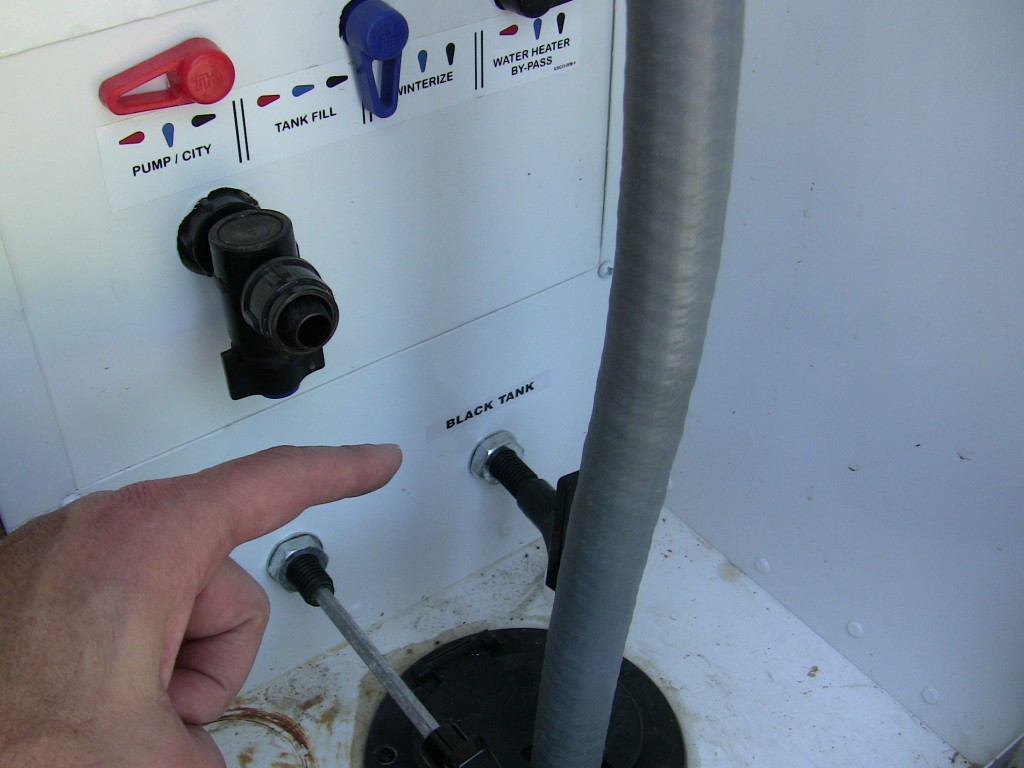
rv black tank valve control in convenience center on drivers side of rv 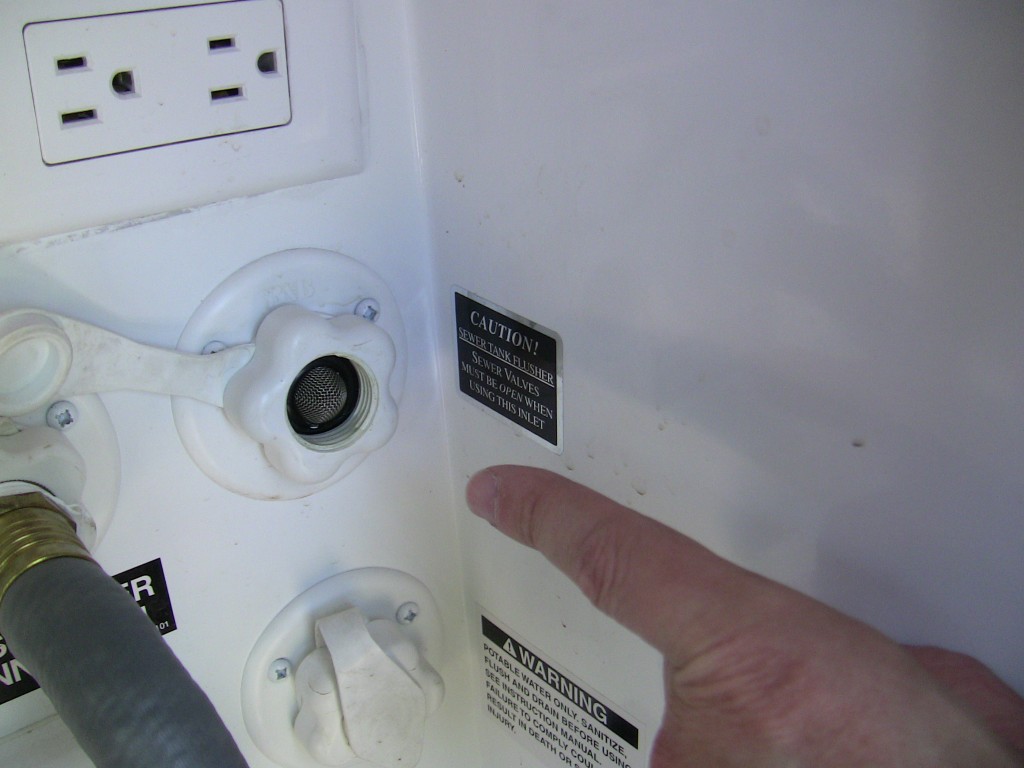
rv black tank rinse water connector 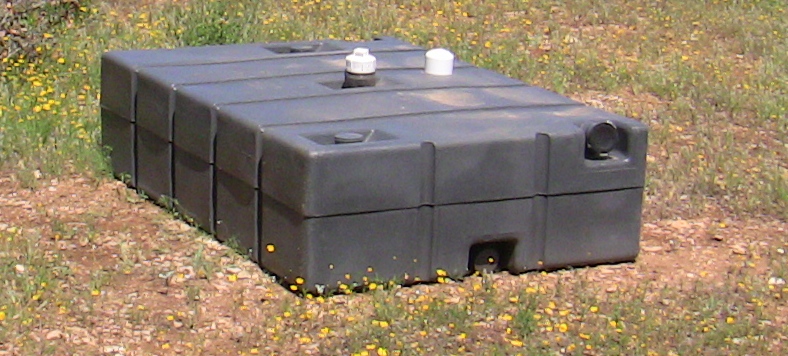
RV Black Tank 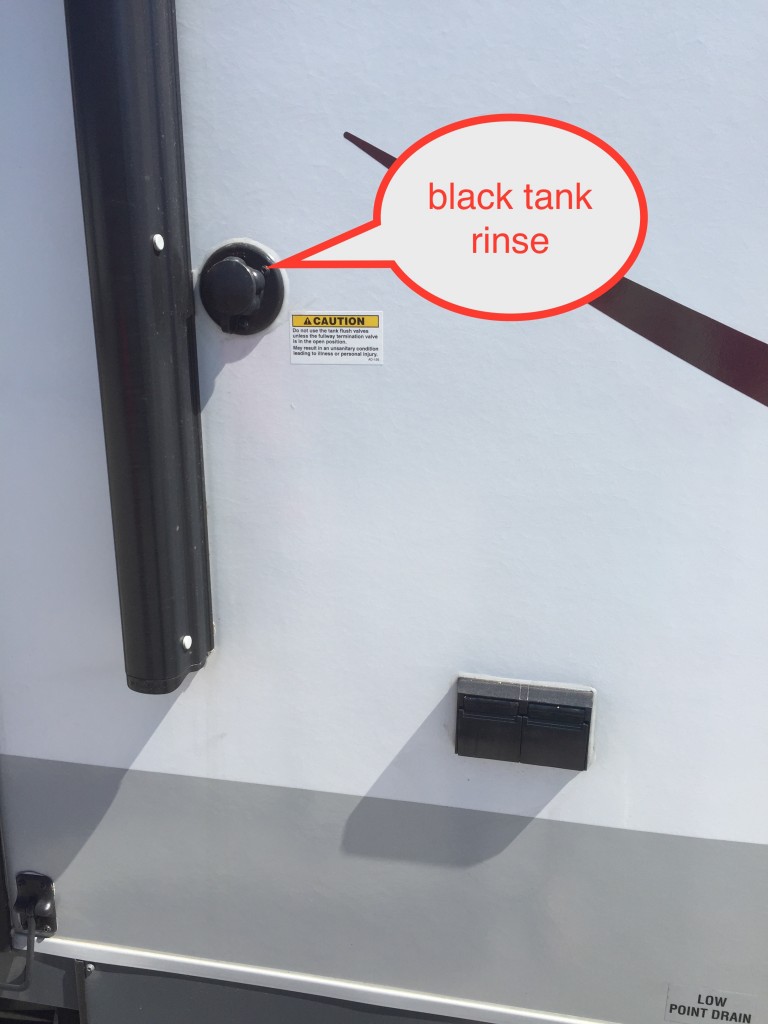
Jayco travel trailer black tank rinse 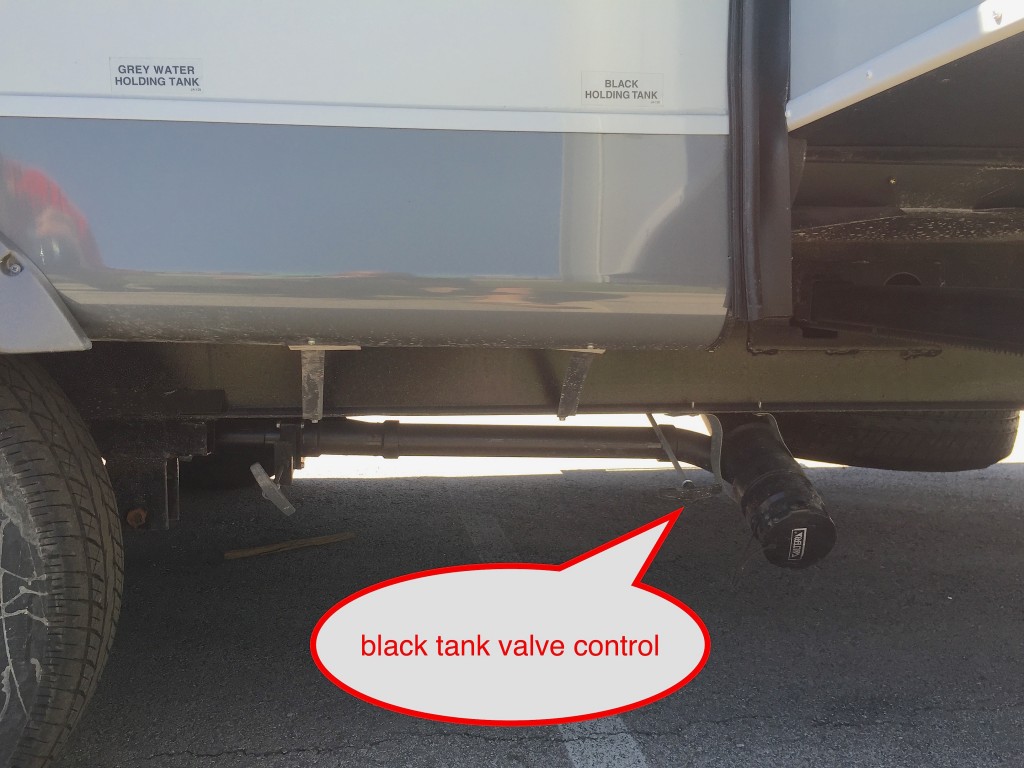
Jayco travel trailer black tank control valve 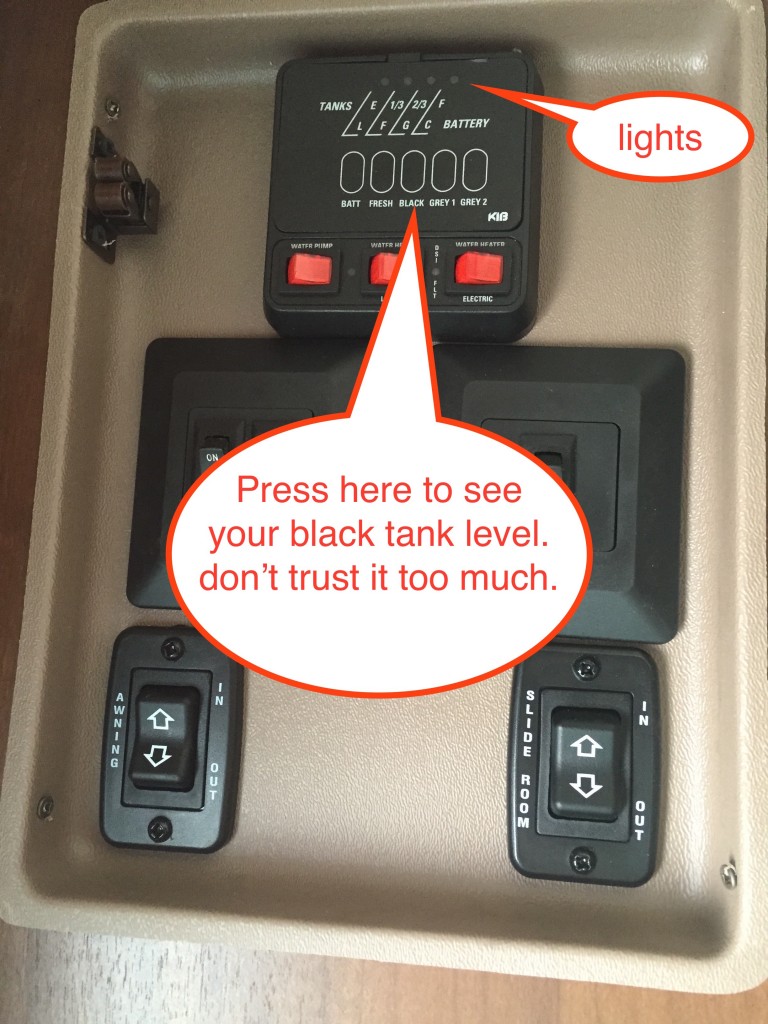
Jayco travel trailer control center black tank level 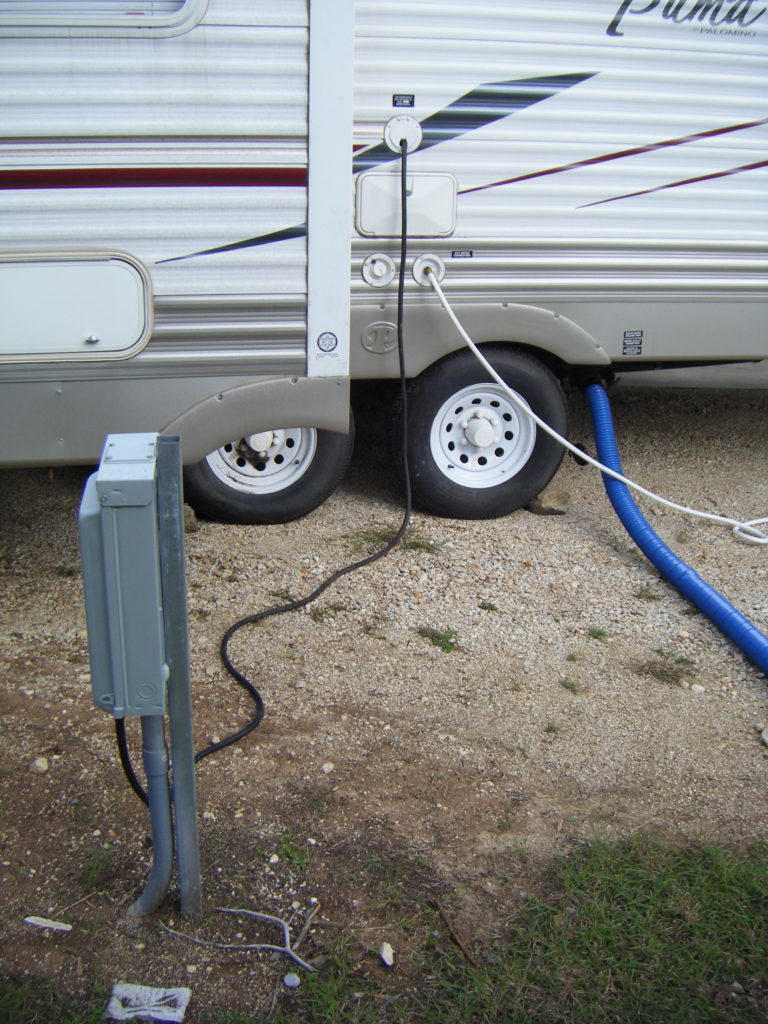
Convenience Center showing rv fresh water city water electric and sewer 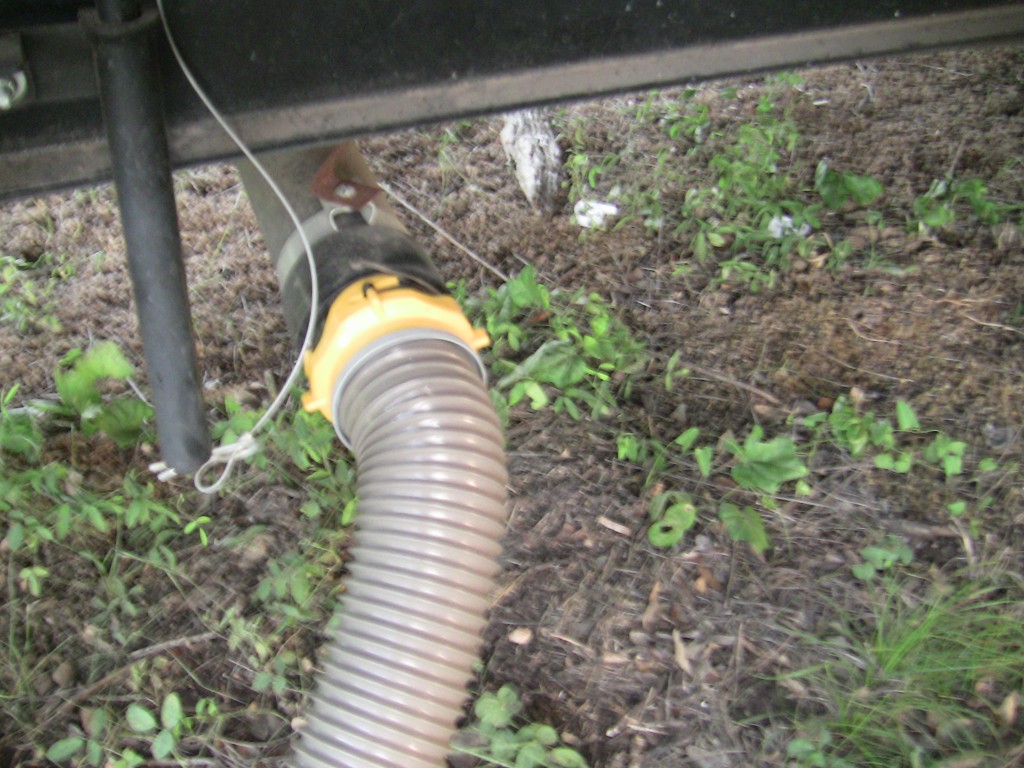
rv sewer connection 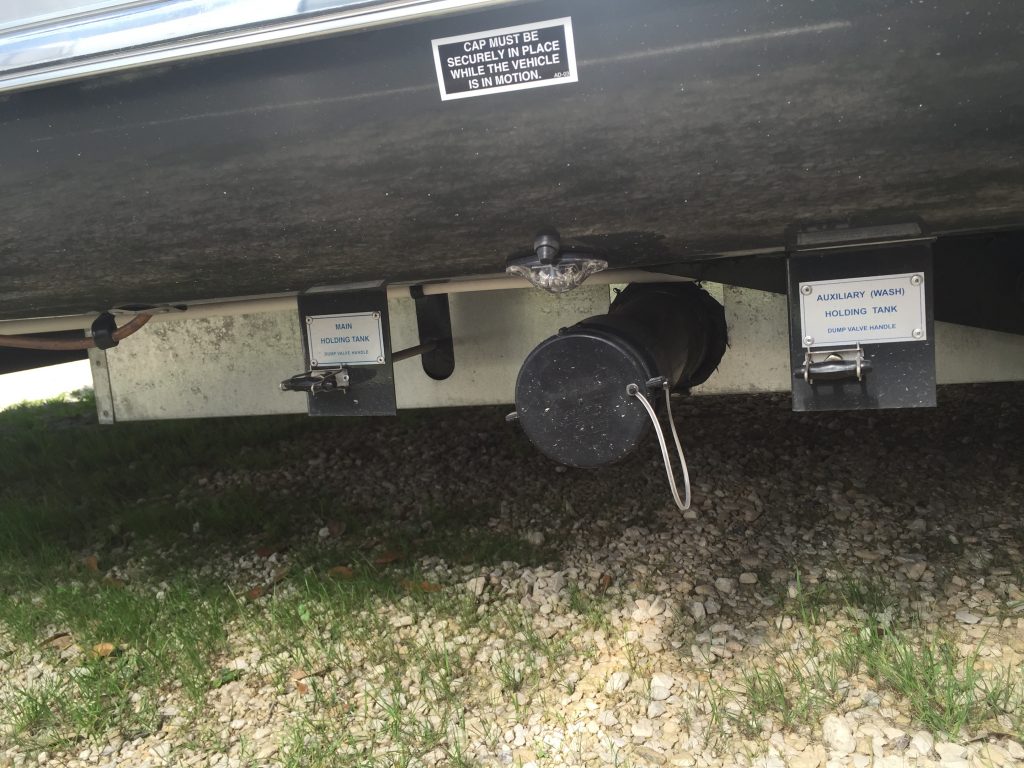
Airstream International Black Gray Holding Tank Controls 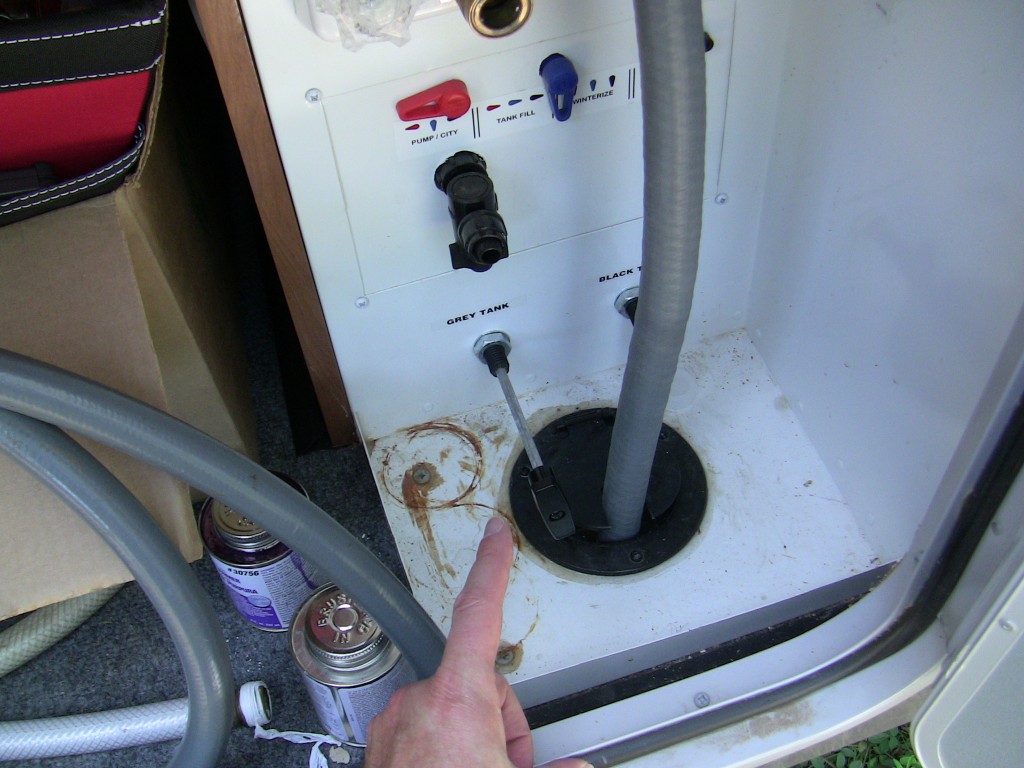
rv gray tank control lever or grey tank depending upon how you spell the word grey.
RV Blank Water Tank Video and Information
- MVP 2008 RV Waste Water System Users Manual Owners Guide
- Our RV Toilet could SPEAK; it told us the black tank was full!
- RV Basics : Black Water or Sewer System Information
- Open Range 399BHS black and gray tank information
- RV Basics : Black Water Holding Tank Treatment Strategies
- RV Humor : The Black and Gray Water Drain Hose
- The Pros and Cons of having an additional 1/2 bath in an RV
- RV Basics : Fruit Flies, Gnats, and Flies
Are black tank treatments effective?
The Lower Colorado River Association which has a big role in central Texas water quality has published this statement on black tank treatments: Some 1200 products, many containing enzymes, can be purchased for use in septic tanks. In controlled tests, none have been proven beneficial.
Black tank valve location and procedure for emptying the black tank on your RV
On the DRIVERS side of the RV you’ll be able to find the valve control for the black tank. It is 99.9% of the time within a few inches of the grey tank valve control and the rv sewer pipe connection. Both the grey and the black tanks valve outputs are joined in a “Y” connection to a single sewer connection.
You should always keep the black tank valve closed.
Why? Because if you don’t, you’ll get a build-up of gunk ( what did you want me to say ) right under the toilet in your black tank. Also by keeping it closed it keeps the system enclosed and hopefully free from critters that can come up the sewer pipe from the netherworlds.
When the black tank is full you will drain it. How will you know? Well, for starters it will sound full. Ours has the amusing trick of an air bubble actually splashing “stuff” up in the air at you. But usually you can just tell by listening.
Most RVers have a procedure for draining the grey and black tanks. You must assume for the procedure that the black is full and the grey is fairly full. That makes the procedure work. The grey is used to clean out the pipes after draining the black.
Here is the procedure :
- Open the black tank valve.
- Wait until empty.
- Rinse the black tank
- Close the black tank valve
- Open the grey tank valve
- Wait until empty
- close the grey tank valve.
Black Tank rinse systems – a typical inlet connection and information
After you empty out the black tank, you can rest assured, knowing full well that the black tank IS NOT clean. In fact I’m sure you have plenty of “hangers onners” inside that black tank. Those hanger-onners will cause your black tank sensors to perform very badly. Ok – truth be known they almost never work reliably or well, but hanger-onners make it much worse.
You have a good chance that if you RV was built after 2007 or so that it will have a black tank rinse system. This is really nice because the alternative is trying to get a hose or wand or SOMETHING down into the black tank to rinse it out. We don’t do the rinse every time we empty the tank, but we do it about every 3 or 4 empties.
What the black tank rinse does is send water in through 1-3 nozzles that irrigate the entire ( allegedly ) black tank basically washing it down from the inside.
All you have to do is hook up a garden hose and turn on the water. It turns out that everyone is a little bit sensitive, rightly so, about getting “backwash” from the black tank into the rest of the RV’s water system so behind the scenes, the black tank rinse has a few “backflow” prevention techniques. So it is more than just a straight shot to the black tank.
Many people recommend an external backflow preventer as well as you don’t want yukky stuff to get back into a clean water area.
An important recommendation is that your BLACK TANK VALVE should be OPEN while rinsing and cleaning your black tank. If its not, you are going to have an exciting overflow. Make sure it is open!!!!
You should be able to locate the black tank rinse inlet, if one exists on the DRIVERS side of the RV.
Connecting Sewer or Septic Systems to your RV Black Tank and Gray Water Tank with a Universal Elbow
Here are things to look for in a universal RV sewer elbow
- I think the unit should be clear plastic. Not so as to be grotesque, but so you can get an idea of the health of your holding tanks. Its like this – you want to know, even if you don’t want to know.
- I think that a lever of sorts should be attached to the fitting so you can get it on and off without tools. But the elbow works like that.
- The hose clamp that attaches the sewer hose to the elbow should work. It should not be a puzzle for people who do not care that much.
- We prefer to have a sewer hose that has the integrated universal elbow.
RV Black Tank and Grey Tank Sewer Connections
The RV sewer connection is one of the most talked about, most joked about, and most problematic areas of the RV. MOST RV’s of any appreciable size have one.
The basic setup for RV’s is that there are TWO tanks. One that is a black tank for human waste ( from the RV toilet ) and one for gray water which attaches to the sinks and showers.
Both of these tanks have a large valve that you can open/close and the output of that valve then is routed from both the tanks to a single connection which is the sewer connection that you’ll see here.
What connects to the RV Sewer connection
From this connection, you can have a hose or pipe which then connects to a legal place to dump your black and gray tanks.
I say legal because you simply cannot empty your black tank anywhere.
That is not legal and not cool. When parks or places you camp do not have a place for you to dump your black tank, the expectation is that when you leave you take your waste with you and somewhere close by you can find a “dump station” that will allow you to empty your tanks for a modest fee.
Storing the RV sewer hose
Along with the connection, you’ll usually find a place in the rear bumper of your RV to store a short section of flexible hose which you can take with you and use to empty your black and grey tanks. The hose itself can have a very funny nickname – the stinky slinky. It is worthwhile to note that the slinky does wear out.
I won’t touch on it here except to list a few of the areas that black and grey tanks cause discussion around. As with many things on this planet, many have lots of passionate arguments on each side of an issue, but few have real facts. You’ll have to take in all the arguments and make your own way.
- Chemicals and types of chemical in your black tanks – very controversial – do you or don’t you and what chemicals. You can find lots of passionate discussion on both sides of this.
- Drain flies and how to get rid of them.
- Smells from the black tank inside the camper – and we’re not talking about roses here.
- Smells from the grey tank inside the camper.
- Types of toilet paper used
My PERSONAL big question is WHY DO THE RV’s PIPING NOT FIT WITH STANDARD PVC PIPING YOU CAN FIND IN THE HARDWARE STORES? I know people will say – oh RV manufacturers wanted to reduce weight and make for quick attach connections, but you know what? They could have done that AND been compatible with standard PVC pipe connections.
Whether you admit it or not, part of the human experience is dealing with your own personal waste, and in an RV you have to face it head on.
RV Grey Tank Valve and Control Information
On the outside of your RV, usually on the drivers side of the RV, if you look a little, you’ll find the connection for the sewer hose, but near that you’ll also find the controls for the black and grey tank’s valves.
Locating the valve controls near here make sense – you would hook up the sewer hose, or at least check to make sure that it is “ready for business”. Then you would open the valve and let things flow. After tanks are empty – which you can tell by sound and by the way the sewer hose looks, you can then shut off the valve.
Most RVers have a tried and true formula for how they empty their tanks – which usually you will leave closed – for a multitude of reasons ( drain flies, smells, etc. ). The ordering I list next is the usual method and is a shorter list than I listed earlier in this article.
- open and drain black
- rinse black ( if you have a rinse system )
- close black
- open and drain grey
- close grey
The grey tank could be located most anywhere under your RV, but usually it will be centered underneath and your kitchen sink, bathroom sink, and shower drain into the grey tank. The tank has a little slope in the floor and the valve is in the bottom of the grey tank. The valve is connected to the control lever that is very similar to the control cable on a bicycle brake.
On most RVs the valves are labeled grey and black.
The local “bombing mission” or how to NOT drain your RV black tanks (pretty please?)
As Sheri and I visit Nebraska we run across many different people. Nebraska is very sparsely populated – approximately the same amount of people live in Nebraska that live in greater Austin Texas! I’m building up to a point so bear with me… We’ve noticed that there are RV’ers who consider themselves part of the RV community, some who are part of an actual RV club, and then finally, we’ve now discovered a new group – those that simply own an RV and really don’t know anything about RV community ‘norms’, rules, or even laws for that matter. I think that comes from old age, norms from 50 years ago, and a sparse population.
So we ran across some old timer Nebraskan’s who aren’t so well acquainted with what I would call the norms and rules of good RV’ing and are probably violating the law. I’m simply a ‘reporter’ of sorts, relaying what I saw/heard, what it made me think about, and passing it on.
This fellow, and I’ll leave him nameless, is an old timer from Nebraska and he has an RV. When I spoke with him about his RV, he said he had to take it out on the road. I asked him what he was going to do and he said he was going to empty his tanks. When I asked him where he did that at, he said, and I quote, ” I get going about 60 mph down an old gravel road and then I open the tank. “. I mentioned that I really wanted him to do it on a road where I wouldn’t be driving and mentioned that I thought that might be illegal.
He said he even had a local Sheriff camp with him and the Sheriff utilized that method! I asked him more about it and he said that after he did it you couldn’t even tell because he used digesters and that it was really liquid.
Of course I can’t verify any of his claims, but it does seem that you shouldn’t be doing this at all, no matter how remote you are! But he is very, very old and I think I’ll just let him get a ticket from the state patrol if they catch him. He is a WWII vet and I can’t help this lets him relive his WWII bombing missions.
For the rest of you who aren’t that old, will you just use an approved dump station?
RV52.com ONLINE INSTANT RV Mechanic if you need help NOW!
ATTN RVers: RV52.com has found ONLINE RV mechanics with JustAnswer, one of internet's trusted "paid" answers site. Sometimes you just need the answer NOW and from a real mechanic.
Your toilet can and will tell you when your RV black tank is full!
The toilet in our Open Range 399BHS had a great way of telling us that the black tank was full.
Ok. Maybe not that “great” of a way. But it was VERY effective.
You gotta face facts. Those so called “alarms” and tank alerts are not very good. They aren’t accurate and they never seem to work
So you use “smell” as one of the main tests to see if you black tank is full. But that might not always work.
When the black tank was very full, the toilet would “burp” when you flushed it.
Now a “burp” is like a “fart” of air. Like a small breeze. If you put a small breeze into a bunch of “debris” (human solid waste) and you are standing over the toilet, you will get debris on you!
Sheri got burped on just one time.
Public Service Announcement on Draining Black Tanks
List of RV Black Water Tank Enzymes
I thought I would provide a short list of different enzymes you can get to treat your RV black water tank to reduce odors and prevent build-up of waste. I am not endorsing these, but I’m putting this list together as a service so if this is the method YOU utilize you will have a handy reference.
I may have accidentally gotten a deodorizer only crossed with the enzyme type as the manufacturers label these to get people to purchase them not necessarily to be honest.
- RidX – Not really for RV’s but I see several RV owners saying they use it.
- Camco Orange Power
- Thetford Aqua Kem
- TST RV Toilet Treatment
- Odorlos
- Ecosmart
- Quickscents
- Nature’s Whey RV
- Enviro-Chem RV
- Super Digest It.
- Roebic RV
- Sealand
- Valterra Toilet Treatment
- Walex
RV Black Tank Water Treatment Strategies
If you search the web for information on the treatment of RV Black Water tanks, you’ll find several strategies listed. You’ll see lots of people insulting each other and saying they know this and they know that and that the other person’s strategy is very poor. Usually, they will insult an alternate strategy and then say “this works for me”.
In over 8 hours of non-stop web surfing I found ONE and ONLY one person who actually took the time to objectively ask HIMSELF the question : Is my treatment plan working? He did it by inserting a small camera up into his black water tank and looking around. That made me smile, but at least this guy KNOWS.
This article is not to completely describe the strategies, but is meant to provide context to information people are seeing on the web. In follow up articles, I’ll go into more details about different strategies.
Let’s do put a single FACT on the table here: Black Water tanks are simply holding tanks and are not designed for TREATING waste.
The next fact is that the toilet simply drops waste (I do not plan on being more descriptive) directly into the black water tank.
At the far end of the black water tank, there is a valve to drain the tank. The tank is designed with a slope. All roads lead to the valve.
Black water tank goals :
- Do not make the RV smell.
- Always drain reliably.
- Sensors read reliably.
- Related to the prior two : Waste does not build up on the sides/bottom of the tank.
- Honestly this SHOULD be a goal : Do not hurt the environment.
Most strategies for treatment hinge on the goals above. The following are strategies that seem to be in common deployment, with little empirical evidence they work.Listing of Strategies for managing the black water tank for an RV. No particular order :
- Water Only. Just use lots and lots of water.
- Pro – simple and probably does work. Since cleaning the tank is usually involved the tank should stay free of gunk.
- Con – very, very, very wasteful of water.
- Geo Method. A concoction of dish soap, water softener and sometimes other stuff. Also recommends using lots of water with this method.
- Pro – Probably works, but maybe no better than water only? Unproven.
- Con – Chemicals. Lots of water. Unproven.
- Deodorants. Typically chemicals of some sort. Lots of discussion about avoiding formaldehyde. For this article, just assume that none of these have formaldehyde.
- Pro – Simple. Easy to understand how it works – it reduces the smells.
- Con – Could be bad chemicals. Might allow gunk to build up.
- Waste Digesters. Supposed to eat the gunk and liquify it. Supposed to use the same bacteria that are in the environment to eat the waste and make it non-smelly, non-sticky-to-the-side, and easy to drain off. In my mind this makes sense, but.
- Pro – If it really works, then you would have clean, non-stinky tanks.
- Con – Unproven. No evidence found online but lots of stuff to BUY! Also, when bacteria eat, the put out smells too.
- Macerator. Imagine a toilet that when you flush takes the waste and basically runs it through a blender. Well, that is what it is. A $600 toilet!!! On one hand this also makes a lot of sense, but I’m not there yet.
- Pro – doesn’t address stinky. But sticky-to-the-tank and easy draining seems obvious to me.
- Con – $600 plus the humiliation of using a blender on your dookey.
Well, there you have it, my outline of the basic strategies and why people do them.
RV Black Tank How To Videos
[tubepress mode=”tag” tagValue=”rv how to black tank”]

Thomas says
I found your video on emptying & cleaning black tanks to be very informative. However, my one question remains unanswered: Why will my flush valve no longer pass water? Do you think it is clogged with debris or is there an adjustment I can make that will open it back up? If the flush valve is clogged, will the water softener treatment you mentioned solved this problem? We have been full-timing for a year now and I have always flushed the black tank with every dump but now hooking up a hose to the flush valve accomplishes nothing because the valve is apparently closed.